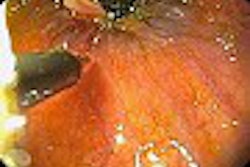A handheld PET probe should "become a routine part of (cancer) surgery," according to a presenter at the Society of Surgical Oncology (SSO) meeting earlier this month in Atlanta.
Dr. Seza Gulec of the Center for Cancer Care in Goshen, IN, reported on a 40-patient study of the value of the PET probe (Node Seeker, IntraMedical Imaging, Los Angeles; GE Healthcare, Chalfont St. Giles, U.K.) when combined with FDG for lesion detection.
The advantage a PET probe has over conventional probes is that it can accurately detect FDG uptake in lesions, Gulec explained.
Of the 40 patients in this study, 36 were scheduled for therapeutic excision; four were set for diagnostic excision, he said. The patients underwent either a PET or MRI scan to detect tumor sites and to guide surgical decisions. FDG was administered between one and four hours before surgery.
In all the patients, the probe was able to pinpoint the tumors seen with the preoperative MRI or PET scan, Gulec said. The smallest detectable lesion was 0.5 cm in diameter.
The probe localized four lesions that weren't palpable and four lesions in anatomically tricky areas that had previously been explored surgically. The probe also found two lesions that had not been spotted by the preoperative scan.
"In 14 patients, the probe had a direct impact on the outcome of surgical exploration," Gulec said.
The PET probe proved to have adequate sensitivity in the clinically relevant distance range and to deliver good spatial resolution. Specifically, the probe had a count rate of 1,440 counts per second at the probe tip, dropping to 255 counts per second at 10 cm from a point source. The probe was able to distinguish between two "hot spots" that were 8 cm apart, he said.
The sensitivity of the probe related to the size of the tumor, as well as FDG uptake, Gulec said. For all lesions, the mean tumor-to-background ratio was 1.9, with a range of 1.4 to 3.1. Breast cancers had the highest mean tumor-to-background ratio at 2.1, while melanoma had the lowest at 1.8.
In addition to FDG uptake, the probe's performance was related to the location of the lesion, the timing of the FDG injection, and elements of the probe design, including shielding and noise reduction.
The probe would be especially valuable when lesions are not palpable, or in situations where the operative field has been disturbed by previous surgery, Gulec concluded.
By Michael Smith
AuntMinnie.com contributing writer
March 14, 2005
Related Reading
GE, IntraMedical partner, March 4, 2004
Experimental beta probe locates rupture-prone plaque, June 17, 2002
Copyright © 2005 AuntMinnie.com



















